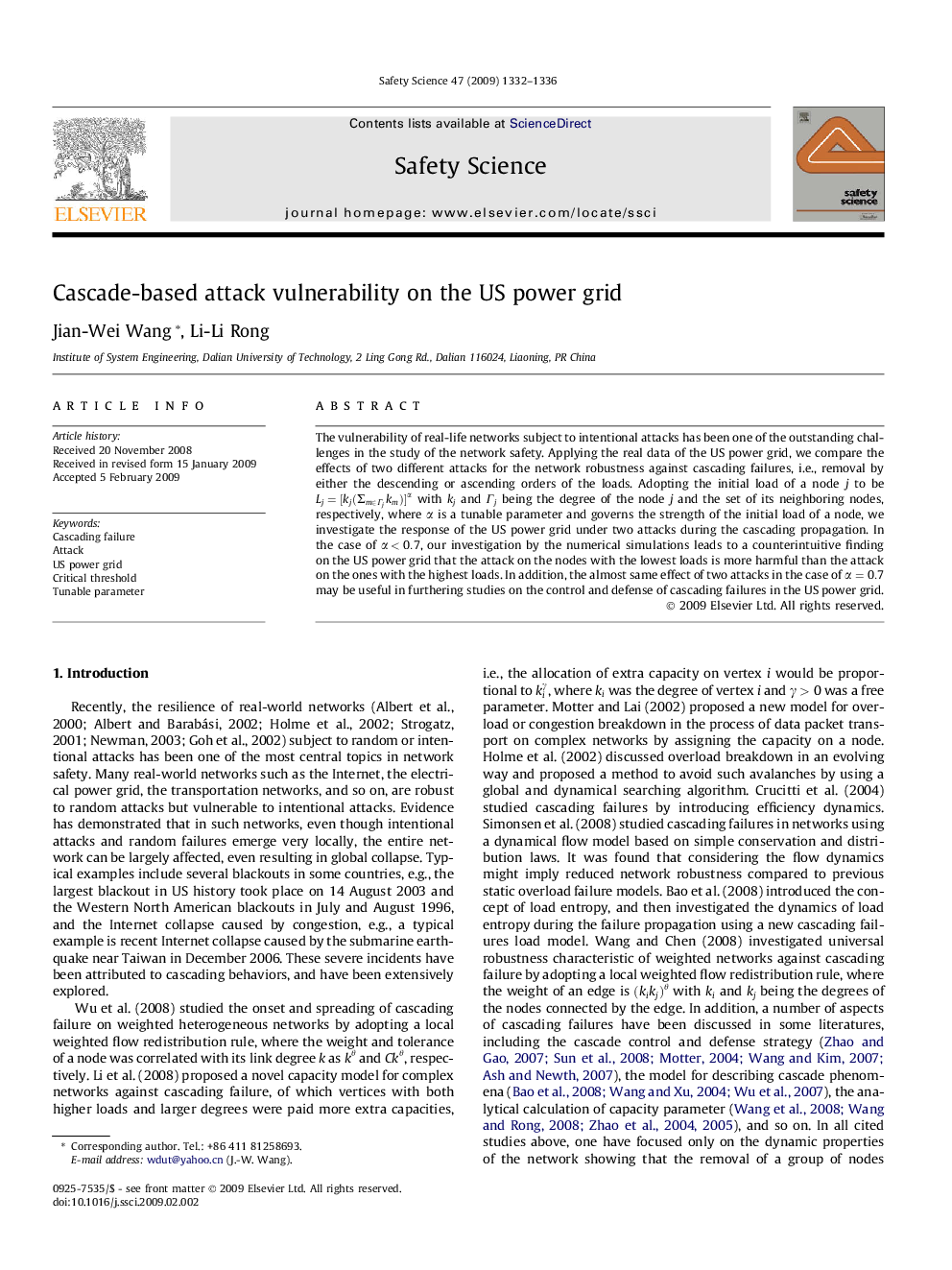| Article ID | Journal | Published Year | Pages | File Type |
|---|---|---|---|---|
| 590078 | Safety Science | 2009 | 5 Pages |
Abstract
The vulnerability of real-life networks subject to intentional attacks has been one of the outstanding challenges in the study of the network safety. Applying the real data of the US power grid, we compare the effects of two different attacks for the network robustness against cascading failures, i.e., removal by either the descending or ascending orders of the loads. Adopting the initial load of a node j to be Lj=[kj(ΣmâÎjkm)]α with kj and Îj being the degree of the node j and the set of its neighboring nodes, respectively, where α is a tunable parameter and governs the strength of the initial load of a node, we investigate the response of the US power grid under two attacks during the cascading propagation. In the case of α<0.7, our investigation by the numerical simulations leads to a counterintuitive finding on the US power grid that the attack on the nodes with the lowest loads is more harmful than the attack on the ones with the highest loads. In addition, the almost same effect of two attacks in the case of α=0.7 may be useful in furthering studies on the control and defense of cascading failures in the US power grid.
Related Topics
Physical Sciences and Engineering
Chemical Engineering
Chemical Health and Safety
Authors
Jian-Wei Wang, Li-Li Rong,
